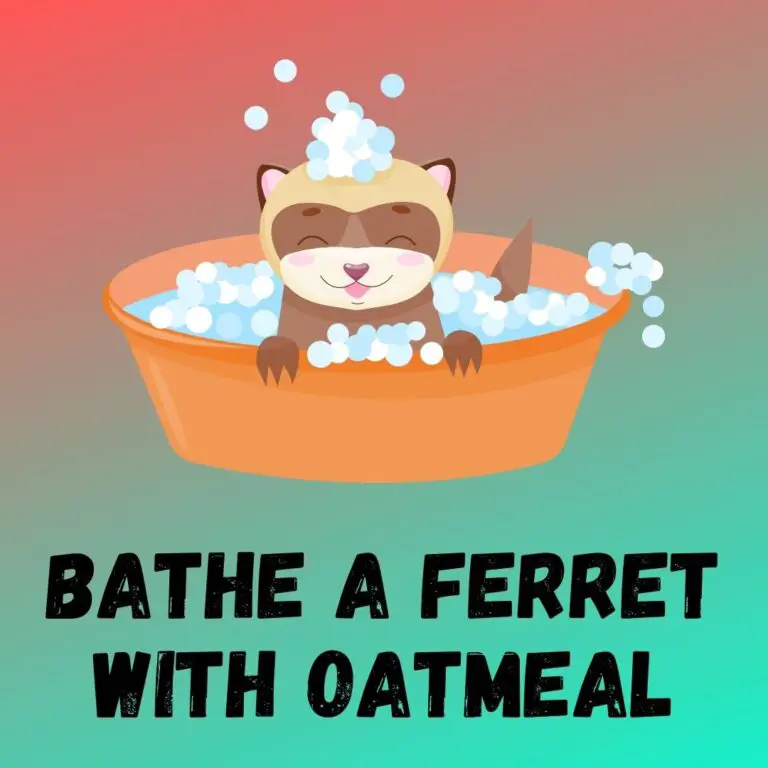
Have you ever wondered if ferrets can purr? Well, you’re not alone! As a ferret enthusiast, I’ve often been curious about the various sounds these adorable creatures make and what they mean. In this article, I’ll dive into the fascinating world of ferret sounds and their meanings. From purring to chirping, we’ll explore the different vocalizations that ferrets use to communicate with us and with each other. So, if you’re ready to unravel the mysteries of ferret sounds, let’s jump right in!
Can Ferrets Purr?
Ferrets are fascinating creatures that communicate with humans and each other through a variety of sounds. One question that often arises is, “Can ferrets purr?” The answer is yes!
Purring is not just limited to cats; ferrets can also purr. However, their purring sounds different from the deep and rumbling purrs of cats. Ferrets produce a soft, gentle purring sound that is more similar to a contented humming noise. It’s a delightful sound that often indicates that your little ferret friend is feeling happy and relaxed.
While the exact reasons behind ferret purring are not fully understood, it is believed to be a way for them to express their contentment and relaxation. It’s a signal to let you know that they are feeling comfortable and safe in their environment.
In addition to purring, ferrets also use a wide range of other vocalizations to communicate. Each sound has its own unique meaning and it’s important for ferret owners to understand what these sounds indicate. Let’s explore some of the common sounds that ferrets make and their meanings.
10 Ferret Sounds and Their Meanings
Ferrets are not only adorable, but they also have a unique way of communicating with us and with each other. They use a variety of sounds to express their feelings and intentions. In this section, I’ll be delving into 10 common ferret sounds and their meanings.
- Dooking: When a ferret “dooks,” it’s the equivalent of happy excitement. It’s a high-pitched, chirping sound that they make when they’re having a great time playing or exploring.
- Hissing: Similar to cats, ferrets can hiss as a warning sign. It’s their way of saying “back off” or “I feel threatened.” If you hear your ferret hiss, it’s best to give them some space until they feel more comfortable.
- Clicking: Ferrets may make clicking noises to indicate curiosity or interest. It’s like they’re saying “Hmm, that’s intriguing!” This sound is often accompanied by a tilted head and focused eyes.
- Screaming: Though not a pleasant sound to hear, ferrets may scream when they’re scared or in pain. It’s their way of alerting you that something is wrong and they need immediate attention. If your ferret screams, it’s crucial to check for any signs of distress or injury.
- Whining: Much like a dog, ferrets can whine when they want attention or are feeling bored. It’s a soft, continuous sound that they make to express their desire to play or interact with you.
- Purring: Contrary to popular belief, ferrets do purr, but their purring sounds different from cats. Ferret purring is a soft, gentle sound that indicates contentment and relaxation.
- Chirping: In certain situations, ferrets may chirp, especially when they’re excited or trying to get your attention. It can sound similar to a bird’s chirping and is usually accompanied by playful behavior.
- Crying: When a ferret cries, it’s a sign of distress or discomfort. It may occur when they’re injured, in pain, or feeling scared. If your ferret is crying, it’s necessary to investigate the cause and provide them with appropriate care.
The Fascinating World of Ferret Sounds
As an expert in the field, I’ve had the privilege of studying and observing the unique sounds that ferrets make. These charismatic creatures use a wide range of vocalizations to communicate their thoughts, feelings, and needs. In this section, I’ll delve into the fascinating world of ferret sounds and explore their meanings.
- Purring: Contrary to popular belief, ferrets can indeed purr! However, their purring sound differs from that of cats. Ferrets produce a soft, gentle purring sound that signifies contentment and relaxation. This is their way of expressing happiness and satisfaction.
- Dooking: One of the most distinctive sounds that ferrets make is known as dooking. It’s a sharp, repetitive sound that resembles a chuckle or a series of short barks. Ferrets typically dook when they are excited or playful. It’s their way of expressing joy and enthusiasm.
- Hissing: Like many other animals, ferrets hiss as a warning signal. When they feel threatened or agitated, they emit a hissing sound to communicate their discomfort or displeasure. It’s their way of saying, “Back off!”
- Clicking: Ferrets may produce a rapid, clicking sound when they are curious or investigating something that catches their attention. It’s their way of expressing interest and intrigue.
- Screaming: While not as common, ferrets can scream when they are extremely frightened or in distress. This piercing, high-pitched sound indicates a state of extreme fear or danger. It’s a signal for help and should be taken seriously.
- Whining: Ferrets may whine when they are feeling bored, lonely, or seeking attention. This soft, whimpering sound is their way of expressing their need for interaction and stimulation.
- Chirping: Similar to birds, ferrets can make chirping sounds. This high-pitched, rhythmic sound is often heard when they are engaged in rough play or chasing each other. It’s a sign of excitement and enjoyment.
- Crying: When ferrets cry, it’s not in the same way that humans do. Their cry is a distressed, whimpering sound that they make when they are in pain, discomfort, or feeling unwell. It’s a cry for attention and care.
Exploring Ferret Vocalizations
Ferrets are fascinating creatures with a wide range of vocalizations that they use to communicate. As an experienced ferret owner, I have come to understand and appreciate the different sounds that these playful animals make. In this section, I will delve into the world of ferret vocalizations and explore their meanings.
1. Purring: While it may surprise some, ferrets can indeed purr, but their purring sound is quite different from that of cats. Rather than a deep rumble, ferrets purr with a more subtle and high-pitched sound. When a ferret purrs, it generally signifies contentment and relaxation. It’s a gentle reminder that they are happy and at ease in their environment.
2. Dooking: One of the most distinctive sounds that ferrets make is a happy, chuckling noise called dooking. It’s a joyful sound that you’ll often hear when they’re excited, playing, or exploring. Dooking is a way for ferrets to express their pleasure, and it’s a delightful sound for any ferret owner to hear.
3. Hissing: Sometimes, ferrets may hiss, and it can be mistaken for aggression. However, hissing in ferrets is more akin to a warning signal. When threatened or feeling defensive, they may hiss to let others know to back off. It’s their way of saying, “I’m not happy, and I need my space.”
4. Clicking: Have you ever noticed your ferret making a clicking sound? This intriguing vocalization is often accompanied by a slight arching of the back. Clicking typically occurs when a ferret is uncertain, curious, or interested in something. It’s their way of expressing intrigue and showing that they are paying attention.
5. Screaming: While it is rare, ferrets can scream when they are scared, in pain, or extremely stressed. It’s a piercing, high-pitched scream that can be quite distressing to hear. If your ferret screams, it’s important to assess their wellbeing and address any potential issues promptly.
Purring: A Unique Ferret Sound
When it comes to sounds, ferrets are quite fascinating creatures. While we often associate purring with cats, you might be surprised to learn that ferrets can also purr. However, it’s important to note that their purring sound is different from that of cats.
Ferret purring is a soft and gentle sound that signifies contentment and relaxation. It’s a sign that your ferret is feeling safe and comfortable in its environment. Purring is often accompanied by other behaviors such as snuggling up to you or curling into a ball.
One interesting thing about ferret purring is that it’s not as loud as a cat’s purr. Ferrets produce a quieter and more subtle purring sound. This can make it a bit challenging to hear, especially if there are other noises in the background. You might need to be in close proximity to your ferret to catch the sound of its purring.
It’s important to pay attention to your ferret’s purring as it can give you valuable insight into their emotions. If your ferret is purring, it means they feel secure and content in their current situation. On the other hand, if your ferret stops purring suddenly, it could be an indication of something unsettling or stressful happening.
So, next time you hear your ferret purring, take a moment to appreciate the unique sound they make. It’s their way of communicating their happiness and satisfaction. And remember, just like with cats, a purring ferret is a happy ferret.
Now let’s dive into the other vocalizations that ferrets use to communicate, including dooking, hissing, clicking, screaming, and chirping. Each of these sounds has a specific meaning and can indicate a range of emotions. Let’s explore these fascinating sounds in more detail.
Chirping: What Does it Mean?
Chirping is another unique sound that ferrets can make. It’s a sound that you might not expect from these furry little creatures, but it’s definitely fascinating to hear.
When a ferret chirps, it usually means they are excited or happy. It’s their way of expressing joy or anticipation. It’s almost like they are communicating their excitement to you, and it’s a truly adorable sound to witness.
Chirping is often accompanied by a playful attitude and a wagging tail. It’s their way of letting you know that they are in a good mood and ready to engage in some fun activities. So, if you hear your ferret chirping, it’s a great sign that they are feeling happy and playful.
However, chirping can also be a sign of frustration or impatience. If your ferret wants something and they are not getting it, they may start chirping to express their dissatisfaction. It’s their way of saying, “Hey, pay attention to me!” or “I want that toy right now!”
As a ferret owner, it’s crucial to pay attention to the context in which your ferret is chirping. Are they excited and playful, or are they feeling frustrated? Understanding the meaning behind their chirping can help you provide them with the right environment and prevent any unnecessary stress.
Remember, just like with any other vocalization, each individual ferret can have their unique way of chirping. Some ferrets may chirp more frequently, while others may rarely do it. It’s important to observe your ferret’s behavior and develop an understanding of their specific chirping patterns.
Now that we have explored chirping, let’s move on to the next section, where we will discuss another interesting sound that ferrets make – screaming. Stay tuned!
Ferret Sounds Meanings Overview
Here’s a quick summary of the different sounds that ferrets make and their meanings:
| Sound | Meaning |
|---|---|
| Purring | Contentment and relaxation |
| Dooking | Joy and excitement |
| Hissing | Fear or warning |
| Clicking | Curiosity or anticipation |
| Screaming | Fear, pain, or extreme distress |
| Chirping | Excitement, happiness, or frustration |
Other Vocalizations and Their Meanings
When it comes to communicating, ferrets have a wide range of vocalizations that they use to express themselves. Let’s explore some of these unique sounds and their meanings:
- Dooking: One of the most distinctive sounds that ferrets make is called dooking. It’s a joyful and playful noise that resembles a giggling or a chuckling sound. When ferrets are excited or having fun, they often dook. It’s a sign of happiness and contentment.
- Hissing: Similar to other animals, ferrets hiss when they feel threatened or scared. It’s a warning sound that they use to communicate their discomfort or to fend off potential predators. If you hear a ferret hissing, it’s best to give them some space and try to alleviate their stressor.
- Clicking: Ferrets use clicking as a way to express curiosity. It’s a sound they make when they encounter something new or interesting. Clicking can also be associated with anticipation or excitement. Pay attention to your ferret’s body language when they’re clicking to understand their specific needs.
- Screaming: While not as common as other sounds, ferrets do have the ability to scream. Screaming is usually a sign of distress, pain, or extreme fear. If your ferret is screaming, it’s essential to identify the cause and address it immediately to ensure their well-being.
- Chirping: Chirping is another unique sound that ferrets can make. It’s a high-pitched noise that they use to express excitement, happiness, or frustration. Chirping is their way of vocalizing their emotions and needs. By paying attention to the context in which your ferret is chirping, you can better understand their specific desires or frustrations.
Understanding these different vocalizations can help you decipher your ferret’s emotions and needs more effectively. By being attuned to their sounds and body language, you can create a stronger bond with your furry friend and provide them with the care they require.
How Ferrets Communicate with Humans
Ferrets may not speak our language, but they have their ways of communicating with us. Understanding how ferrets communicate can help us better understand their needs, emotions, and overall well-being. Let’s explore some of the ways ferrets communicate with humans:
- Body Language: Ferrets have a range of body language cues that can give us important information about their mood and intentions. For example, a ferret that is standing tall with its tail in its natural position is likely relaxed and content. On the other hand, a ferret that is hunched with its tail puffed up may be feeling defensive or frightened. Paying attention to these cues can help us gauge how our ferrets are feeling and respond accordingly.
- Vocalizations: We’ve already discussed some of the vocalizations that ferrets can make, such as purring, dooking, hissing, clicking, and screaming. These sounds can convey a variety of emotions and messages. By familiarizing ourselves with these sounds and their meanings, we can better understand what our ferrets are trying to communicate. For example, a ferret purring softly may indicate contentment, while a ferret hissing may be expressing fear or warning.
- Touch: Ferrets are tactile creatures, and they often communicate through touch. They may nudge us with their noses, lick us, or even gently bite us to get our attention or express affection. It’s important to be gentle and receptive to their touch, as it is a significant part of their communication repertoire.
- Scent Marking: Ferrets have scent glands, especially in their anal region, which they use to mark their territory. When a ferret rubs itself against objects or people, it is leaving its scent behind as a way of communicating and claiming ownership. While this behavior may sometimes seem strange to humans, it is a natural part of how ferrets communicate.
Understanding how ferrets communicate with humans is crucial for building a strong bond and ensuring their well-being. By paying attention to their body language, vocalizations, touch, and scent marking, we can respond appropriately and create a harmonious relationship with our furry friends. Remember, communication is a two-way street, and it’s up to us to learn their language and listen to what they’re trying to tell us.
How Ferrets Communicate with Each Other
Ferrets are highly social animals, and they have developed various ways to communicate with each other. Understanding how ferrets communicate can provide valuable insights into their behavior and emotions.
Body Language
Like other animals, ferrets use body language to convey important messages. Paying attention to their body language cues can give us a better understanding of their intentions and mood. Here are some key body language signals to look out for:
- Posture: A relaxed ferret will have a slightly arched back, while an agitated or defensive ferret may hunch, puff up its fur, or flatten its body closer to the ground.
- Tail Position: A wagging tail indicates excitement, while a straight, stiff tail may indicate aggression or fear. A tucked tail usually signifies submission or anxiety.
- Ear Position: Ears that are relaxed and upright suggest curiosity or attentiveness, while flattened ears might indicate fear or aggression.
Vocalizations
Ferrets use a variety of vocalizations to communicate with each other. Here are some common sounds and their meanings:
- Purring: Similar to cats, ferrets can also purr when they are content and relaxed.
- Dooking: This joyful sound is often heard when ferrets are playing or excited.
- Hissing: A hiss is a warning sign that a ferret is feeling threatened or defensive.
- Clicking: Ferrets make clicking noises as a sign of irritation or impatience.
- Screaming: A piercing scream usually indicates severe pain or extreme distress.
Touch
Ferrets also communicate through physical contact. They use gentle bites, nudges, and licks to get attention or show affection to their fellow ferrets. Their play behavior often involves wrestling, chasing, and mock-biting, which helps them establish social bonds and hierarchy within their group.
Scent Marking
Scent marking is another important form of communication among ferrets. They have scent glands located near their anus, which they use to mark their territory and leave messages for other ferrets. This behavior helps establish boundaries and inform other ferrets about their presence.
Unraveling the Mysteries of Ferret Sounds
When it comes to ferret communication, understanding the various sounds they make is key to deciphering their emotions and intentions. As a ferret owner, I quickly realized that these adorable creatures have quite the vocal repertoire. In this section, I will delve into the world of ferret sounds and help you decipher their meanings.
1. Purring: One common question among ferret owners is whether or not ferrets can purr. The answer is yes! Similar to cats, ferrets can produce a soft, rhythmic vibrating sound that indicates contentment and relaxation. It’s a heartwarming sound that lets you know your furry friend is feeling safe and secure by your side.
2. Dooking: If you’ve ever heard a ferret emit short, excited chirping sounds, then you’ve witnessed the famous ferret dook. Dooking is a joyful vocalization that they make when they are excited, happy, or anticipating playtime. It’s their way of expressing pure delight and can bring a smile to any ferret owner’s face.
3. Hissing: While dooking signifies joy, hissing is the complete opposite. When a ferret feels threatened or frightened, they may hiss to communicate their discomfort. It’s important to remember that hissing is a defensive behavior, and the ferret may resort to this sound if they feel cornered or scared.
4. Clicking: Ferrets can produce a distinct clicking sound by quickly grinding their teeth together. This behavior is usually seen during play or moments of excitement. Clicking sounds in ferrets can indicate happiness and eagerness to engage with their environment or playmates.
5. Screaming: This is a sound no ferret owner wants to hear. Ferrets rarely scream, but when they do, it’s a sign of extreme distress or pain. It’s crucial to address this immediately and seek medical attention if necessary.
6. Whining and Grumbling: Just like humans, ferrets can express their dissatisfaction or frustration through whining and grumbling sounds. These vocalizations are often heard when a ferret wants attention, is annoyed, or wants something that they cannot access at the moment.
Conclusion
Understanding how ferrets communicate is essential for their well-being and for building a strong bond with these fascinating animals. By paying attention to their body language, vocalizations, touch, and scent marking, we can gain valuable insights into their emotions and intentions.
Ferrets use a variety of vocalizations to convey different messages. They purr to show contentment and relaxation, dook to express joy and excitement, hiss when feeling threatened or frightened, click their teeth together to display happiness and eagerness, scream when in extreme distress or pain, and whine and grumble to express dissatisfaction or frustration.
By familiarizing ourselves with these sounds and their meanings, we can better respond to our ferret’s needs and provide them with the care they require. Additionally, understanding their body language cues, such as posture, tail position, and ear position, allows us to gauge their mood and intentions accurately.
Remember, communication is a two-way street. By learning to interpret and respond to our ferret’s communication methods, we can strengthen our bond and create a harmonious environment for them to thrive in. So, take the time to listen and observe, and you’ll be rewarded with a deeper understanding of your furry friend.






